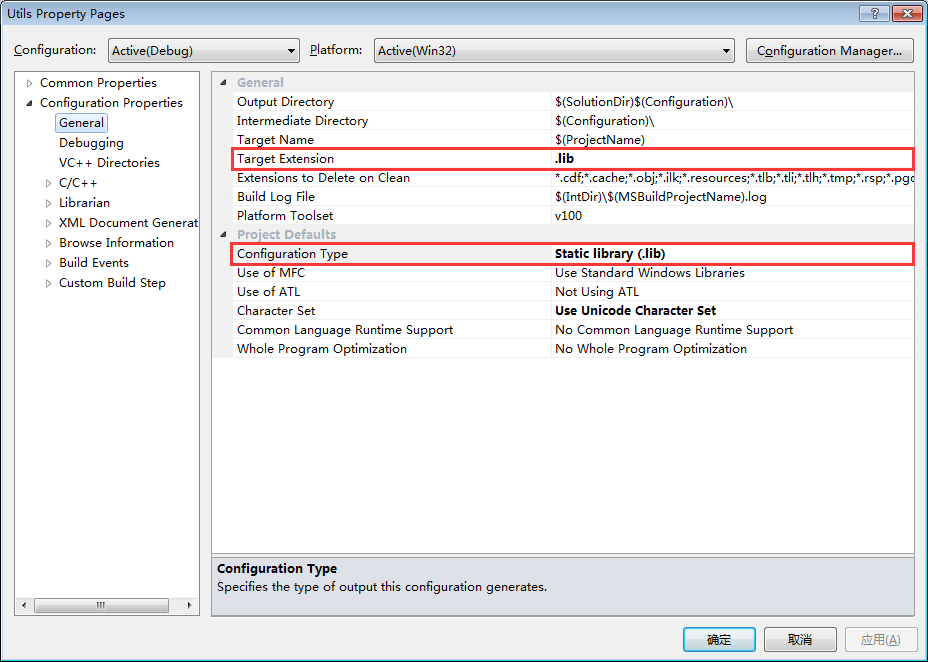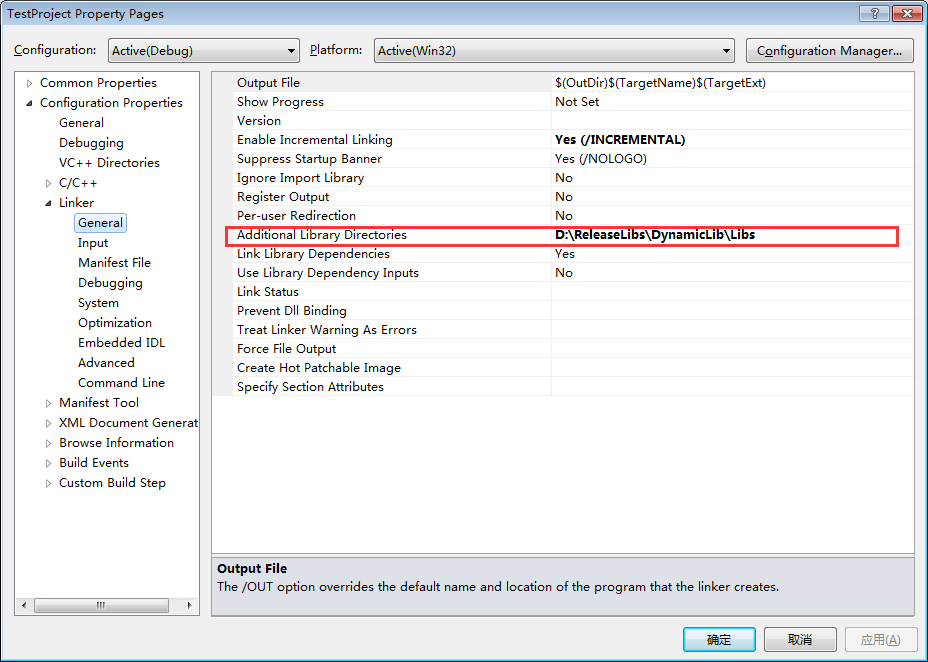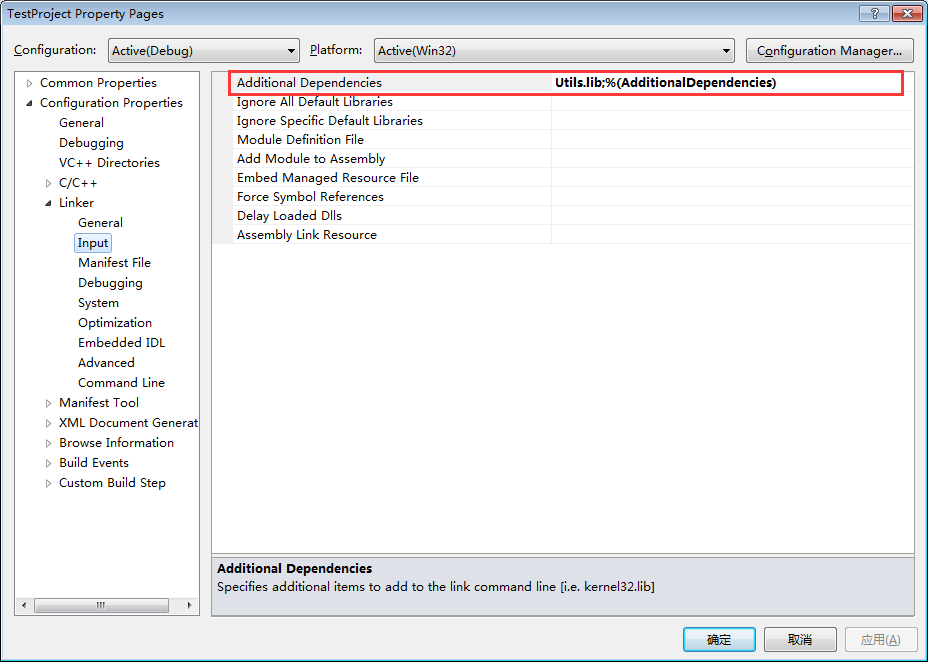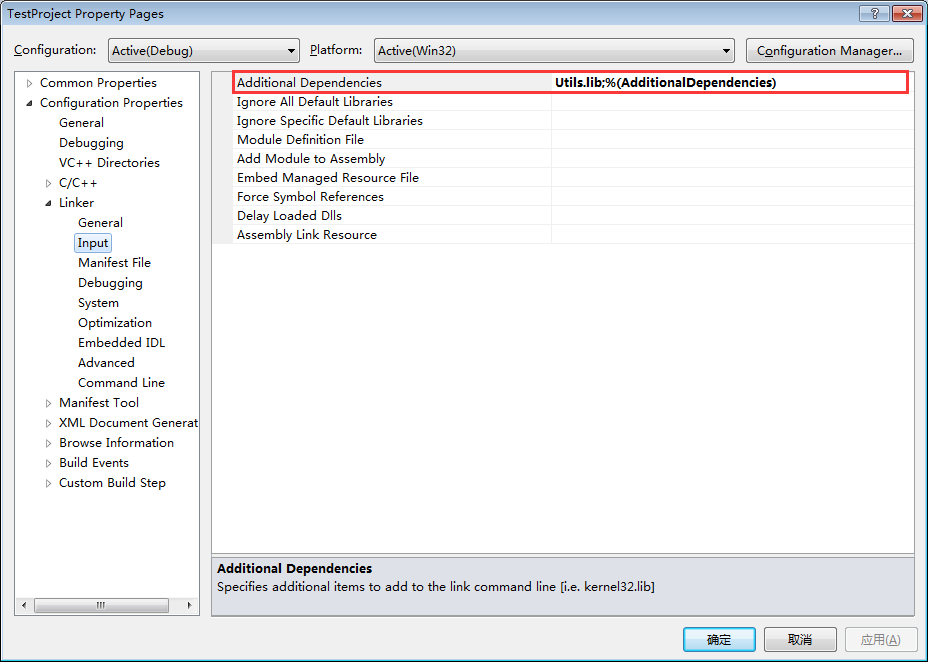带你玩转Visual Studio——带你发布自己的工程库
上一篇文章带你玩转Visual Studio——带你高效管理代码通过对VisualSVN优秀插件的讲解,让我们掌握了在集成开发环境VS中快捷高效地管理代码的技能。然而我们开发的程序并不总是直接地生成可执行的软件,我们可能只是开发某个大型系统的一个组件,也可能是开发某个软件的内核SDK提供给上层的应用程序调用,在开发的过程中我们也可能会用到第三方的开源库。那如果将自己的程序编译成程序库给调用方用呢?又如何在自己的程序中引用第三方库呢?这将是这篇文章要讲的内容——发布自己的工程库。
什么是程序库?
库是写好的现有的,成熟的,可以复用的代码。现实中每个程序都要依赖很多基础的底层库,不可能每个人的代码都从零开始,因此库的存在意义非同寻常。比如你经常使用的STL(Standard Template Library)也是库,有了STL你才能方便地使用std::string、std::cout这些类。
本质上来说库是一种可执行代码的二进制形式,可以被操作系统载入内存,被别的程序调用执行。C++的库有两种:静态库和动态库。将一个程序编译成可执行文件一般经过 预编译–>编译–>链接 这几个过程,而静态库与动态库的区别主要体现在链接这个过程。
静态库:
在链接阶段,会将编译的目标文件.obj 与引用到的库.lib 一起链接打包到可执行文件exe(也称为目标代码)中,程序运行时将不再需要该静态库。
因此最终链接成的可执行文件(.exe)体积较大。在Windows中一般以.lib为后缀名,在Linux中一般以.a为后缀名。
动态库:
在链接阶段,动态库.dll并没有真正被连接到目标代码中,只是将这个动态库的声明链接到目标代码中(这样程序运行时才知道怎样使用这个动态库),动态库.dll依然是独立存在的,只有在程序运行是才会将.dll载入到内存中被程序调用。因此程序运行时必须要有这个动态库且放在正确的路径中。
因此最终链接成的可执行文件(.exe)体积较小。在Windows中一般以.dll为后缀名,在Linux中一般以.so为后缀名。
静态库与动态库的区别:
| 特点 | 静态库 | 动态库 |
|---|---|---|
| 对函数库的链接时机 | 在编译的链接阶段完成的 | 推迟到程序运行的时期 |
| 运行过程与库的关系 | 程序在运行时与静态库再无瓜葛 | 程序在运行时与动态库库需要一直存在且路径正确 |
| 是否链接到可执行文件 | 静态库被链接合成一个可执行文件 | 动态库不会被链接到可执行文件中 |
| 目标文件大小 | 体积较大 | 体积较小 |
| 内存占用度 | 占用内存。如果多个程序使用了同一个静态库,每一个程序者会包含这个静态库 | 节约内存。如果多个程序使用了同一个动态库,可以实现进程之间的资源共享(因此动态库也称为共享库) |
| 程序移植 | 移植方便 | 移植不太方便,需要所有动态库的头文件 |
| 程序升级 | 程序升级麻烦,需要下载整个程序进行升级 | 程序升级更简单,只需要升级某个DLL或某个程序,下载一个升级包即可 |
| 编译出的结果文件 | ProjectName.lib | ProjectName.lib+ProjectName.dll, 这里的ProjectName.lib与静态库的.lib文件不同,这只是一个导入库,只包含了地址符号表等,以便调用方的程序能找到对应的函数,真正的库文件是ProjectName.dll |
编译自己的工程库
假设我们有这样一个工程,这个工程的作用就是提供一些常用的工具类和方法,然后我们要将这个工程编译成库提供给别人使用。
编译静态库
Utils.h:
//===============================================================
//Summary:
// Utils 类, 工具类
//FileName:
// Utils.h
//Remarks:
// ...
//Date:
// 2015/10/4
//Author:
// Administrator([email protected])
//===============================================================
#ifndef __UTILS_H__
#define __UTILS_H__
#include 上述声明的实现参考后面的附录Utils.cpp。 这里的注释是通过VAssistX生成的,关于VAssistX的用法可参考前面写的一篇文章带你玩转Visual Studio——带你高效开发。
要编译成静态库,我们可以这样设置我们的工程:
右键工程->Properties

编译成静态库
然后右键Build就可以了,你可以在解决方案下的Debug(实际的情况中一般要编译成Release版本,设置的方法一样,这里的内容后一章中再讲)目录下就能看到Utils.lib,这就是编译出的库。要将这个库给别人使用,只要提供这个Utils.lib和这个工程的头文件就可以。将Utils.h拷贝到D:\ReleaseLibs\StaticLib\Includes,将Utils.lib拷贝到D:\ReleaseLibs\StaticLib\Libs,把D:\ReleaseLibs\StaticLib这个文件提供出去就可以了。静态库的使用请看后一小节使用静态库
编译动态库
与静态库相比,编译动态库要麻烦一些,一般要在导出函数的声明处加上_declspec(dllexport)关键字前缀。
1. *Utils.h的声明如下
//===============================================================
//Summary:
// Utils 类, 工具类
//FileName:
// Utils.h
//Remarks:
// ...
//Date:
// 2015/10/4
//Author:
// Administrator([email protected])
//===============================================================
#ifndef __UTILS_H__
#define __UTILS_H__
#include 然后右键Build就可以了,你可以在解决方案下的Debug(实际的情况中一般要编译成Release版本,设置的方法一样,这里的内容后一章中再讲)目录下就能看到Utils.dll和Utils.lib,这就是编译出的库。要将这个库给别人使用,只要提供这个Utils.dll、Utils.lib和这个工程的头文件就可以。将Utils.h拷贝到D:\ReleaseLibs\DynamicLib\Includes,将Utils.dll和Utils.lib拷贝到D:\ReleaseLibs\DynamicLib\Libs,把D:\ReleaseLibs\DynamicLib这个文件提供出去就可以了。静态库的使用请看后一小节使用动态库
也许你要问为什么编译出的静态库是Utils.lib,编译出的动态库也有Utils.lib,这两个.lib文件是一样的吗?
你比较一下两个.lib文件的大小就会发现相差很大(静态库的lib有235KB,动态库的lib只有2.7KB),所以肯定不是一样的啦!动态库对应的lib文件叫“导入库”,导入库只包含了地址符号表等,确保调用方的程序能找到对应函数的一些基本地址信息,而实际的执行代码位于DLL文件中。静态库的lib文件本身就包含了实际执行代码、符号表等。
使用导入(第三方)库
在实际的开发中经常要用第三方提供的库,如开源库,或大型系统中合作方提供的组件。如果使用呢?我们就以上面自己制作的库为例进行讲解。假设我们有一个工程TestProject要使用上面自己制作的Utils库。
使用静态库
#include 使用动态库
右键TestProject工程->Properties,进行如下的设置。

设置头文件所在的路径

设置lib库所在的路径

设置要导入哪个导入库将Utils.dll放入与TestProject的输出文件TestProject.exe相同的路径下。这个很最重,不然会编译成功会是执行失败,因为找不到对应的.dll文件。
测试代码与静态库的一样。
附录
Utils.cpp
#include "Utils.h"
Utils::Utils(void)
{
}
Utils::~Utils(void)
{
}
int Utils::Max( int nValue1, int nValue2 )
{
return nValue1 > nValue2 ? nValue1 : nValue2;
}
int Utils::Min( int nValue1, int nValue2 )
{
return nValue1 < nValue2 ? nValue1 : nValue2;
}
int Utils::Range( int nMin, int nMax, int nValue )
{
if (nMax < nMin)
{
int temp = nMin;
nMin = nMax;
nMax = temp;
}
if (nValue < nMin)
{
return nMin;
} else if (nValue > nMax)
{
return nMax;
} else
{
return nValue;
}
}
int ConvertToInt( const char* pStr )
{
int val;
std::strstream ss;
ss << pStr;
ss >> val;
return val;
}参考文章:C++静态库与动态库
上一篇回顾:
带你玩转Visual Studio——带你高效管理代码
下一篇要讲述的内容:
带你玩转Visual Studio——带你管理多种释出版本





